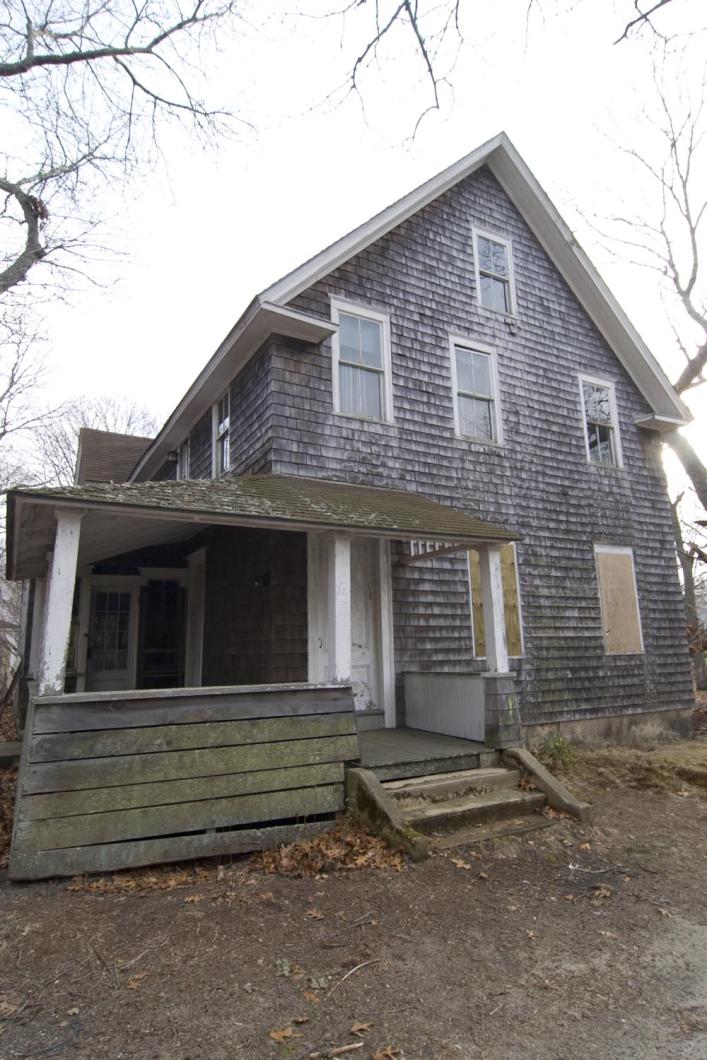Despite lingering concerns about the size, density and effect on a residential neighborhood, the Martha’s Vineyard Commission on Thursday approved the multifaceted Bradley Square project at the corner of Dukes County and Masonic avenues in Oak Bluffs by a nearly unanimous vote.
After months of planning and many hours of emotional testimony both for and against the ambitious project, in the end the final vote by the commission was not close. The commission voted 13-1 to endorse the project, with Chris Murphy casting the lone dissenting vote.
Several commissioners said the numerous benefits of the project — including affordable housing, artists’ work spaces and the preservation of the Island’s first African-American church — outweighed the potential detriments to the neighborhood and concerns about the project’s size.
“I think there is a lot of fear of change surrounding this project. But the bottom line is this will meet a lot of the Island’s pressing needs,” commissioner Richard Toole said.
“This is a case where the benefits and the detriments of the proposal flow from the same place,” commissioner Linda Sibley said. “There are these great things they are trying to do, but they are the same things that have caused people to be skeptical because it’s so much in such a small space . . . but it can’t do everything it seeks to do unless it is this big.”
Mr. Murphy was the first commissioner to share his thoughts on the project and ended up being the lone commissioner to vote against the project. “I think they should take it back and reconsider the plan: reduce the number of units, create more parking and get rid of this massing of buildings in the middle of a neighborhood,” he said.
Other commissioners expressed varying degrees of support for the plan. Katherine Newman said it was one of the most interesting proposals she has ever seen, while chairman Douglas Sederholm said he agonized over his decision to vote for the project.
“This is right at the edge of what I feel comfortable approving,” he said. “It does provide a lot of good, but it will force the people [living] in that area to endure a little more than [the commission] would like.”
The proposal calls for the old Bradley Church to be moved and renovated to create a cultural center with a residential apartment and office. Two new buildings would then be built with five residential apartments in each, with 10 of the 11 apartments to be sold at affordable rates under state guidelines. Four of the apartments are planned as studios where artists would live and work.
The plan also calls for many items now inside the Bradley Church to be archived and kept at the Martha’s Vineyard Museum, while others will be placed on display inside the building.
The Island Affordable Housing Trust will build the project with John Early serving as the contractor.
The existing building on the property was built in 1895 as a mission to help Portuguese immigrants assimilate into society. In later years, it became the Bradley Memorial Church, the first African-American Church on the Vineyard, where the Rev. Oscar Denniston led church services and lived upstairs with his wife and five children. The building has been abandoned for several decades and is in poor condition.
The project has seen a fair share of support and resistance over the past year. Project supporters include a small band of artisans who have formed a budding arts district along Dukes County avenue, as well as the Martha’s Vineyard Museum. Detractors include abutters and neighbors who have complained the project is too big for the proposed site and will create problems with traffic and parking.
The commission approved the proposal with a list of conditions, including one giving local preference for Oak Bluffs residents for four of the affordable housing units and another requiring no large events at the Denniston Church building during any major town events like the fireworks or Illumination Night. Another condition requires the applicant to provide shuttle service for any events with 30 persons or more during the summer season.
Commissioners on Thursday spent the most time debating a condition limiting the number of large events at the Denniston building. Different motions were floated. One, which would have restricted events to three religious and two nonreligious events — for a total of five a week — was defeated by a 7-6 vote.
Although some commissioners said they worried about micromanaging the project by limiting the number of large events each week, others argued they needed to consider the impact on the neighborhood.
“I think we should err on the side of caution,” said Ms. Sibley. “We heard a lot of concern from neighbors about this project throughout this process. I think limiting them to one [larger] event a week is too restrictive, but I also think letting them have seven events a week is not restricting enough.”
The commission eventually voted 9-3 to adopt a condition that would limit larger events of 30 persons or more to three times a week with no distinction between religious and nonreligious events.
And while public hearings on the project have drawn many people both for and against the project, the final vote on Thursday was largely anticlimactic. There was only a handful of the more ardent opponents in the relatively small meeting space at the Olde Stone Building, and many people in attendance were affordable housing officials or members of the arts district.
After the final vote was recorded, Philippe Jordi, executive director of the Island Housing Trust, quietly shook hands with project representatives and supporters. “We’re looking forward to getting started,” he said to one person who offered congratulations. “It was hard work getting here, but it’s worth it.”







Comments
Comment policy »